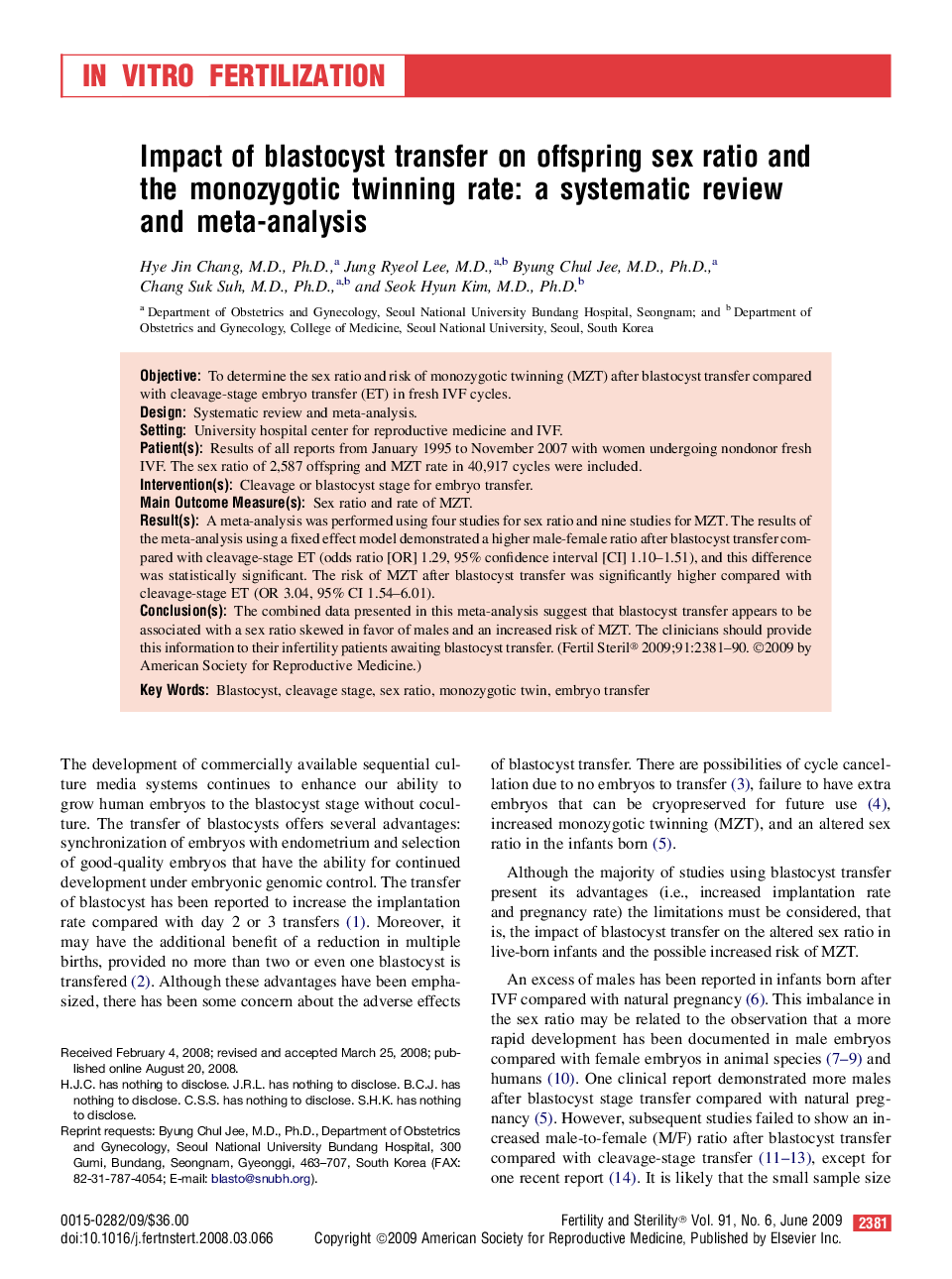| Article ID | Journal | Published Year | Pages | File Type |
|---|---|---|---|---|
| 3934248 | Fertility and Sterility | 2009 | 10 Pages |
ObjectiveTo determine the sex ratio and risk of monozygotic twinning (MZT) after blastocyst transfer compared with cleavage-stage embryo transfer (ET) in fresh IVF cycles.DesignSystematic review and meta-analysis.SettingUniversity hospital center for reproductive medicine and IVF.Patient(s)Results of all reports from January 1995 to November 2007 with women undergoing nondonor fresh IVF. The sex ratio of 2,587 offspring and MZT rate in 40,917 cycles were included.Intervention(s)Cleavage or blastocyst stage for embryo transfer.Main Outcome Measure(s)Sex ratio and rate of MZT.Result(s)A meta-analysis was performed using four studies for sex ratio and nine studies for MZT. The results of the meta-analysis using a fixed effect model demonstrated a higher male-female ratio after blastocyst transfer compared with cleavage-stage ET (odds ratio [OR] 1.29, 95% confidence interval [CI] 1.10–1.51), and this difference was statistically significant. The risk of MZT after blastocyst transfer was significantly higher compared with cleavage-stage ET (OR 3.04, 95% CI 1.54–6.01).Conclusion(s)The combined data presented in this meta-analysis suggest that blastocyst transfer appears to be associated with a sex ratio skewed in favor of males and an increased risk of MZT. The clinicians should provide this information to their infertility patients awaiting blastocyst transfer.
